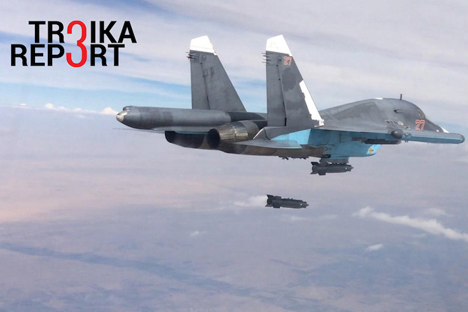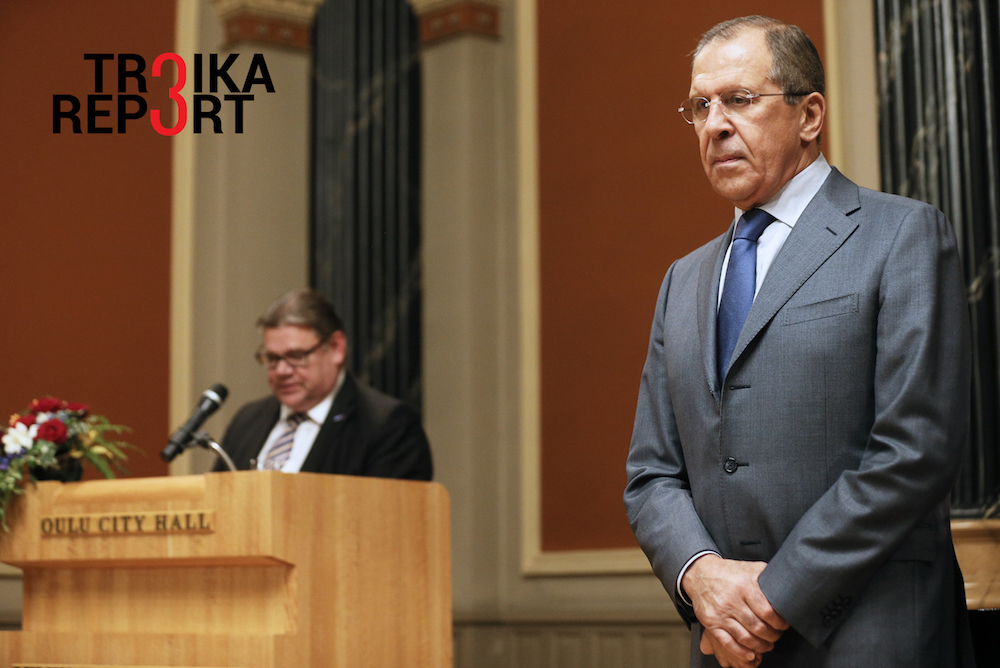Will Russia and the U.S. end up fighting a proxy war in Syria?

Russia's Sukhoi Su-34 fighter aircraft carries out an air strike in the ISIS controlled Al-Raqqah Governorate, Oct. 9
TASSThe recent surge in the supply of American-built weapons to the Syrian rebels determined to topple the government of President Bashar al-Assad has sparked a heated discussion on whether this constitutes the gearing up of a “proxy war” between Washington and Moscow.
U.S. President Obama has rejected the very idea that he might be sliding into a proxy war with Russia. However, the Obama administration acknowledges that it is coming under pressure from the Republicans, who demand a more belligerent policy in Syria to counter what they see as increasingly assertive behavior from Moscow in support of its ally Assad.
It is a known fact that the Sunni monarchies, staunch enemies of the Assad regime, have been supplying their Syrian protégées with TOW anti-tank guided missiles. According to sources from The New York Times, the CIA has a similar program of arming the Syrian opposition with TOWs, launched in 2013 and conducted through local intermediaries.
Recent reports claim that since the launch of Russia’s military operation against Islamic State (ISIS) the flow of TOWs, aimed at destroying Assad’s tanks, has increased. Dozens of video clips have been posted lately on the internet showcasing the efficiency of the American-made BGM-71 TOW with pictures of Assad’s burning tanks. This has allegedly cut short and brought to a standstill the recent offensive by the Syrian army.
This looks like a symbolic gain. But could it become a game-changer? According to Ruslan Pukhov, director of the Center for Analysis of Strategies and Technologies, who spoke to Troika Report, the rebels are now attempting to regain the initiative on the ground. Moreover,
“What might turn the tables is the theoretical supply to paramilitary formations of the Syrian opposition of Stinger anti-aircraft missile launchers. If Stingers are delivered to the battlefield, it would mean a full-fledged proxy war between the United States and Russia.”
The flow of TOWs to the Syrian rebels and the escalation of hostilities, followed by Obama’s dismissal of the danger of a proxy war, have not ended the debate. If such a proxy war does break out, it would be the first case of such a conflict since the end of the Cold War. Actually, there is confusion over the very term “proxy war.” Troika Report approached Andrei Kortunov, director general of the Russian Council of International Relations, for clarification.
“One can argue that if one is fighting with weapons acquired from a foreign country, the country which manufactured the weapons becomes a participant in a proxy war. I do not think we should accept such a broad definition. Proxy war implies that someone is fighting on behalf of another country. It would be an over-exaggeration to claim that the United States has full control over the Syrian opposition. I do not see any grounds to qualify what is going on in Syria as a proxy war. However, the danger is there, if attempts to find a common denominator between the positions taken by Russia and the West fail.”
— But what might be the turning point that could gravely aggravate the situation and set the stage for a proxy war between Russia and the U.S.? Not intentionally, not voluntarily, but by happenstance?
“If you talk of a ‘proxy war’ in the strict meaning of the notion, it would amount to a targeted attack by anti-Assad forces on Russian military personnel in Syria. But on the condition that the attack was undertaken on direct orders from Washington. I think this is a hypothetical scenario, and I do not think that it is likely to happen. Yet, if the escalation continues, we cannot exclude it completely. Unfortunately, it is an option that has to be kept in mind.”
— If anti-aircraft weapons are shipped and given to the Syrian rebels, could this be seen as an element of a proxy war?
“Looking back into history, the United States supplied the Afghan mujahideen with Stingers, and it was regarded as proof of a proxy war. However, the repercussions were detrimental for the Americans themselves: some Stingers ended up in the ‘wrong hands.’ Since then the U.S. has been cautious not to supply state-of-the-art weapons to rebels, especially the anti-aircraft shoulder-mounted missile launchers, because it poses a danger to the aircraft of the U.S. and its allies. I hope it will never come to that, but God knows what the decisions taken by the U.S. might be.”
Post factum, Kortunov tacitly admitted that a proxy war is indeed already being fought on Syrian soil, though he described it as low key and carefully managed.
Yet other experts interviewed by Troika Report agreed that the stakes would be raised if the U.S. starts to supply the Syrian rebels with Stinger anti-aircraft missile launchers. However, this is most unlikely, at least for the time being, explained retired colonel Oleg Kulakov, a professor at the Moscow-based Military University, echoing the opinion of Andrei Kortunov.
“First of all, there is no guarantee that these weapons would not be fired against the aircraft of the U.S. and its allies. Then, the Americans have not forgotten the case of the Stingers they provided to the Afghan mujahideen, and lately were forced to buy them back at a high price. Secondly, as a counter-measure Moscow might consider selling its S-300 anti-missile systems to Damascus. Thirdly, the spread of Stingers across the region would not bring comfort to U.S. allies such as Turkey and Israel.”
All facts and trends considered, the mere discussion of the return of Stingers to the battlefield has revived the specter of the war in Afghanistan back in the 1980s. The times when the U.S. provided anti-aircraft missile launchers to local Islamic militants while British instructors taught them how to shoot down Soviet airplanes are still marked by bitter memories.
But the question really is whether these uncomfortable reminiscences for both the Russians and Americans will deter them from repeating this virtual sparring, with all the unwanted casualties and moral damage it entails.
All rights reserved by Rossiyskaya Gazeta.
Subscribe
to our newsletter!
Get the week's best stories straight to your inbox
